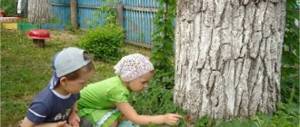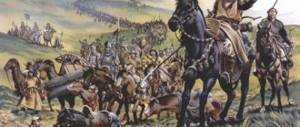Along with crop production, livestock farming is an important branch of agriculture. Its importance for humanity can hardly be overestimated, because thanks to animal breeding we have high-quality food products, raw materials for making shoes and clothing, labor and much more. The history of livestock farming goes back hundreds of years and continues to develop successfully.
Domestication of wild animals
Animal husbandry is one of the oldest human activities. It originated along with agriculture, around the twelfth millennium BC. This is evidenced by numerous archaeological excavations.
At first, ancient people hunted wild animals, thus obtaining food and warm skins. However, over time, they realized that hunting was a very risky activity, which claimed many lives. It was much safer to tame wild animals and start breeding them.
The domestication of animals occurred throughout the world. Presumably, the first pet was a dog, followed by sheep and goats. Then wild pigs and cows were tamed.
The first cows were domesticated more than six thousand years ago, and since then they have regularly brought great benefits to people. Each cow is capable of producing 4-5 liters of milk per day, from which butter, cottage cheese, and cheese are prepared. For a long time, the cow was revered as a sacred animal, and in India to this day it is treated with great respect.
Rice. 1. The cow is a sacred animal in India.
Throughout the history of animal husbandry, humans have managed to domesticate about 40 species of a wide variety of wild animals, which have become an important part of agriculture throughout the world.
TOP 4 articles that are read along with this
- 1. Wild animals
- 2. Crop production
- 3. The world around us (2nd grade) - Professions
- 4. Taiga food chains (grade 4, surrounding world)
One whole
The fundamental principle of the structure of a living organism is the extremely close relationship between various organs and systems, despite significant differences in their appearance, structure and location. For example, if one of the organs is affected by any pathology, this inevitably affects the work of a number of others.
It is from this principle that stems the postulate that schoolchildren often hear from biology teachers in relevant classes - “An organism is a single whole.” This statement very accurately characterizes the principle of structure of a living organism.
From this point of view, the harmonious interaction of all organs and systems is health.
Knowing the location of each organ and the basic patterns of their interaction allows us to determine with a high degree of probability the focus of the disease, and even the mechanisms of its development, having several symptoms at our disposal. It is the possession of such skills that is the goal of studying various aspects of anatomy and physiology in the first years of higher medical education institutions.
Neurological field
The nervous system acts as a coordinator of the work of all organs. All functions and types of activity are subordinated to it:
- thinking;
- speech;
- movement (the nervous system coordinates both conscious and unconscious movements. An example of unconscious motor activity strictly controlled by the brain is breathing).
An important function of the peripheral part of the nervous system (which includes nerve endings, fibers and trunks) is the delivery of information from the periphery to the brain (CNS). Subsequently, it is processed in appropriate centers. It is this collection and analysis of information that allows the brain to accurately and accurately control the body.
The central nervous system includes the brain and spinal cord. To the peripheral - nerve trunks, fibers and endings (receptors).
Heart, blood vessels and blood
The heart is a hollow muscular organ, divided into 4 sections by special partitions. Regardless of the state of the body (sleep or wakefulness), it, essentially performing the function of a pump, pumps liters of blood that circulates through the blood vessels, including the smallest ones that penetrate all tissues of the body. This is how nutrients and oxygen are delivered to cells.
They are dissolved in the blood, and when it enters the smallest capillaries, they are absorbed by living cells.
In addition, blood performs another important function - the evacuation of metabolic products from peripheral tissues. The vessels through which blood flows to the organs are called arteries, and the vessels that carry it in the opposite direction are called veins. These types of vessels have a number of structural differences. In particular, the muscular layer of the arterial wall is more pronounced, due to which the arteries are able to pulsate. Venous vessels have a wider lumen and a thinner muscle wall. Pronounced pulsation is not typical for veins.
Pressure in the vascular bed is controlled by both the nervous system and the endocrine system, and depends on the volume of circulating blood, the conditions in which the body is located, physical activity or lack thereof.
Gastrointestinal tract
This organ system is the pathway through which nutrients enter the body. They are broken down by special enzymes into their component parts and absorbed into the blood through the wall of the stomach and intestines. The activities of the digestive system are assisted by the following glands:
- liver , which carries out external secretion - secretes bile, which breaks down fats;
- pancreas (it is characterized by combined secretion: it secretes digestive enzymes that enter the lumen of the small intestine through the excretory ducts, and hormones that carry out their activity in the blood).
Ensuring gas exchange
Oxygen enters the blood, penetrating through the thinnest membrane of structures localized in the lungs - the alveoli, where it penetrates through the multiply branched bronchial tree. It is a complex system of tubes. Moving from the nasal cavity through the upper and lower respiratory tracts, the air undergoes a process of purification from various impurities contained in it, and also warms up.
There, in the lungs, carbon dioxide, one of the metabolic products, is removed from the body.
During blood circulation through the smallest capillaries, this substance penetrates from the blood into the alveoli, and from there, through the bronchi, when exhaled, it is released into the environment.
Musculoskeletal system
This system includes:
- human bone skeleton;
- ligaments;
- muscles and tendons by which muscles are attached to bones.
Together, the organs of the musculoskeletal system ensure the movement of the body in space. A feature of muscle tissue is its saturation with proteins and rich blood supply. It is these properties that allow muscles to develop under increased load, increase volume and endurance.
On a subjective level, good health is possible only with well-coordinated work of all organs and systems. Otherwise, even with a minor primary disorder, disorders will form according to the principle of a chain reaction, which will manifest itself with corresponding symptoms. The report on the human body in grade 3 contains definitions of organs and systems, as well as information about their location. These topics are covered in more detail in high school biology messages.
Importance of Livestock
This industry is of great importance for humanity because it satisfies many needs:
- quality food products (meat, milk, sour cream, butter, eggs);
- raw materials for various industries (bristle, hides, wool, fur);
- organic fertilizers necessary for growing plants (bird droppings, manure);
- labor (oxen, donkeys, deer, horses).
In countries with well-developed economies, livestock farming occupies one of the leading positions. And this is not surprising, because this industry supplies more than half of the food products for the world's population.
Rice. 2. Livestock farming in Europe.
Thanks to successes in breeding new, more advanced breeds of animals, improving the food supply and general industrialization in developed countries, great success has been achieved in increasing livestock productivity.
Livestock industries
Livestock farming is a very extensive agricultural sector, which, in turn, is divided into several main sectors:
- cattle breeding The most important industry is engaged in the breeding of large and small livestock for milk and meat;
- pig farming The main products of this industry are lard and meat;
- sheep breeding Of great value is sheep's wool, from which carpets, fabrics are woven, warm items are knitted, as well as sheep's leather, from which high-quality shoes are made;
- poultry farming Breeding domestic chickens, ducks, geese, turkeys to obtain dietary meat, eggs, warm down and feathers;
- beekeeping . Breeding bees is possible only in meadow areas, which are called apiaries, and houses for bees are called hives. Honey and beekeeping products are of great value to humans: pollen, wax products, honeycombs;
Rice. 3. Apiary.
- fish farming Growing river fish in special pond farms;
- fur farming . Breeding of fur-bearing animals such as rabbit, arctic fox, mink, nutria to obtain valuable fur;
- horse breeding Horses have ceased to be a draft force, and are currently being bred for participation in exhibitions and equestrian competitions.
A specific branch of livestock farming is reindeer husbandry, which is developed only in the northern regions. Reindeer are an important component of the lives of local peoples, as they provide meat, warm skins and are hardy “transport”.
Human Sciences
In addition to the subject World around us in 3rd grade, the topic of man and his body is studied by biology, which includes several areas:
- anatomy;
- physiology;
- histology;
- hygiene;
- anthropology.
Only by combining all the data that are the subjects of study in these areas can one obtain a holistic idea of what an organism is.
Human anatomy
This science studies the structure of the body. It describes organs and systems, their structure and location. According to Pleshakov’s work program, parts of the human body in grade 3 are studied in less detail, in a general way.
An important section of the scientific field is topographic anatomy, which studies the relative position of tissues, organs and systems.
Anatomy is divided into normal and pathological. The first studies the structure and relative position of organs and systems in a healthy state. The second describes the characteristics of an organism subject to any changes as a result of diseases. This area deals with the diagnosis of pathologies manifested by structural changes in the organs and tissues of which they are composed.
Teachings about the work of internal organs
The objective of this scientific direction is to consider the work of systems and organs starting from the cellular level. By analogy with anatomy, physiology can be divided into normal and pathological directions, depending on what state of the organs it studies. Without knowledge in this area, it is impossible not only to make a diagnosis, but even to make an approximate assumption about the mechanism of development of the pathological process.
Tissue structure
We can say that the science of histology represents the same anatomy, but at the microscopic level. It describes the structure of tissue - features of the structure and differentiation of cells, their interactions, and relative positions.
The specificity of the activity of each organ dictates the options for cell differentiation, so a specialist in the appearance of a cell under a microscope can determine not only the organ from which it was taken, but also the functional state.
Science finds practical application in the diagnosis (both intravital and postmortem) of many normal and pathological conditions of the body.
Hygiene is the path to health
Hygiene can confidently be called the science of maintaining health. This is a whole set of rules, the observance of which prevents the development of diseases, as well as their transmission.
If we talk about this area of knowledge, hygiene borders on a number of other sciences related to the health of the body: valeology, epidemiology. It describes both the requirements for a healthy lifestyle and a set of measures to prevent various disorders. For example, “Wash your hands before eating,” familiar to everyone since childhood, is one of these measures.
What is anthropology
This is a science that, at first glance, does not directly relate to the structure of the organism, nevertheless studies the process of its formation and formation in a historical aspect. Thanks to data obtained and compared by historians and archaeologists, anthropologists were able to get an idea of how and under the influence of what processes the human body was formed in the form in which it exists now.









